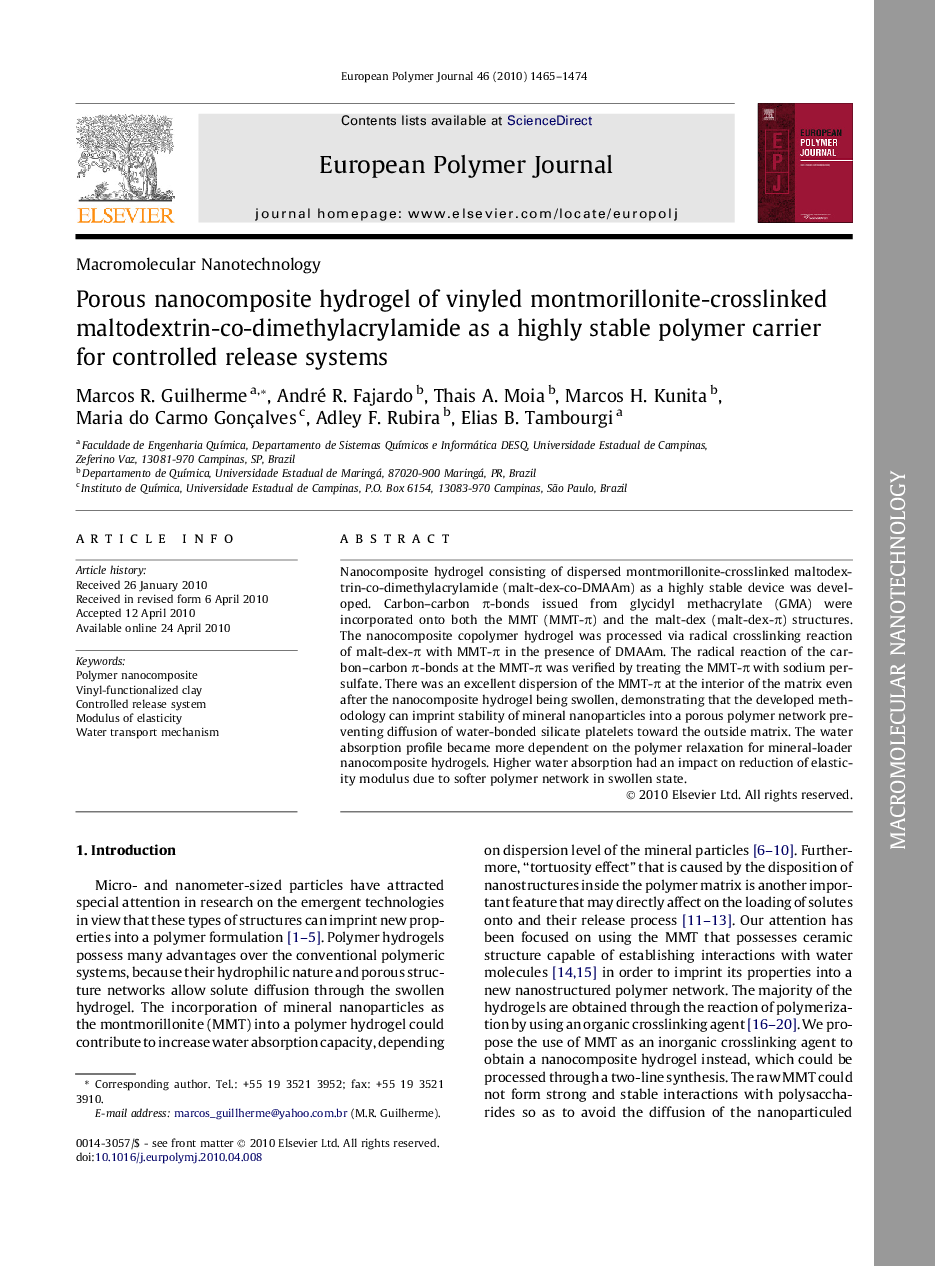| Article ID | Journal | Published Year | Pages | File Type |
|---|---|---|---|---|
| 1402236 | European Polymer Journal | 2010 | 10 Pages |
Nanocomposite hydrogel consisting of dispersed montmorillonite-crosslinked maltodextrin-co-dimethylacrylamide (malt-dex-co-DMAAm) as a highly stable device was developed. Carbon–carbon π-bonds issued from glycidyl methacrylate (GMA) were incorporated onto both the MMT (MMT-π) and the malt-dex (malt-dex-π) structures. The nanocomposite copolymer hydrogel was processed via radical crosslinking reaction of malt-dex-π with MMT-π in the presence of DMAAm. The radical reaction of the carbon–carbon π-bonds at the MMT-π was verified by treating the MMT-π with sodium persulfate. There was an excellent dispersion of the MMT-π at the interior of the matrix even after the nanocomposite hydrogel being swollen, demonstrating that the developed methodology can imprint stability of mineral nanoparticles into a porous polymer network preventing diffusion of water-bonded silicate platelets toward the outside matrix. The water absorption profile became more dependent on the polymer relaxation for mineral-loader nanocomposite hydrogels. Higher water absorption had an impact on reduction of elasticity modulus due to softer polymer network in swollen state.
Graphical abstractFigure optionsDownload full-size imageDownload as PowerPoint slide
